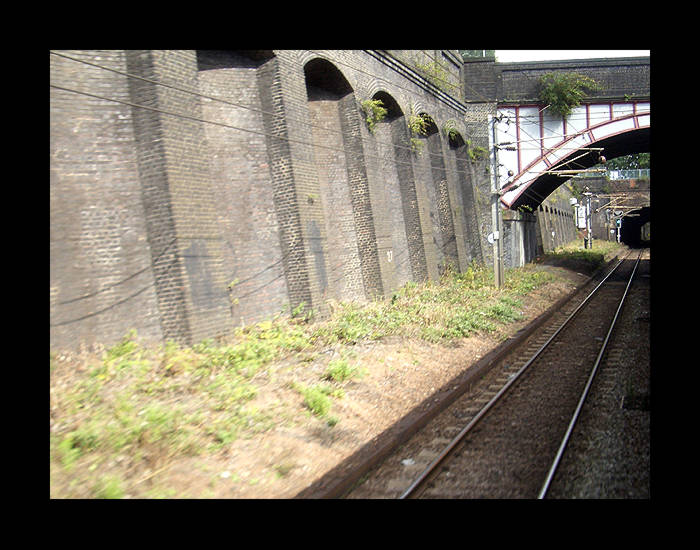|
CAMDEN ROAD
(1868-1916)
Camden Road was closed as an economy measure during the first world war and never reopened.
|
||||
 The location of the station as arrowed. The Camden Town station seen at the bottom of the map is the Camden Road station of today on the North London Line. It was renamed in 1950. |
||||
The location of Camden Road, viewed from the rear (Bartholomew Road). The spacing between the tracks for the platforms is still apparent. A garage was built in the space vacated by the demolished station building. Its roof can be seen on top of the bridge (which is carrying Camden Road over the tracks).
|
||||
View from a northbound Thameslink train looking north, passing the platform area.
|
||||
View from the same train but facing south. The new track visible next to the train is new track stored on the former platform area awaiting installation.
|
||||
The garage that was built on the site of the station building on Camden Road. The garage has since been rebuilt and re-opened.
|
HAVERSTOCK HILL














